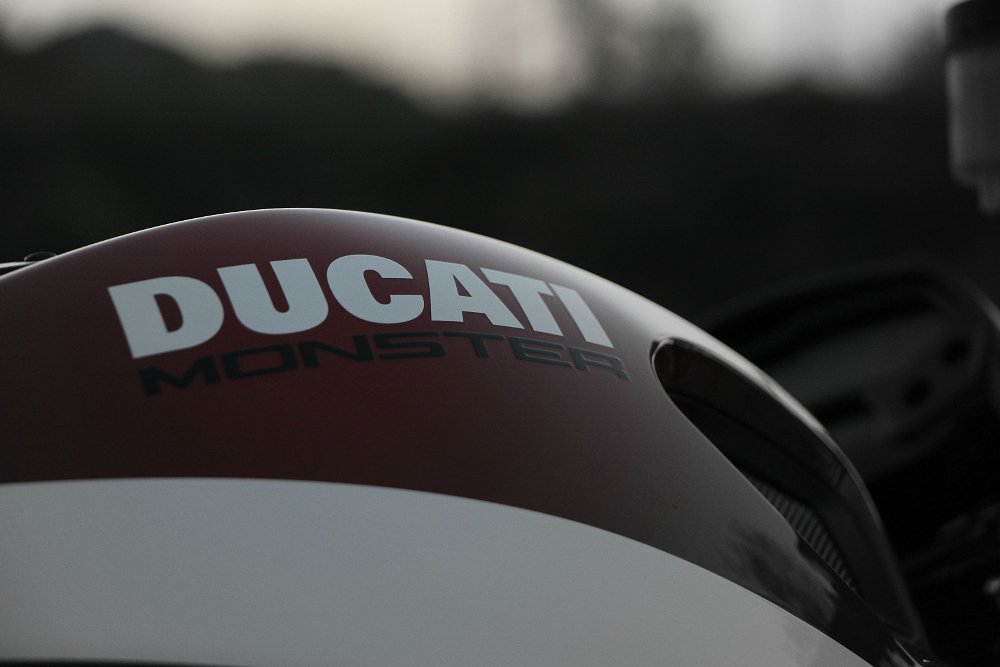Recently, a personally owned motorcycle was giving me the fits.
It was running great, until I turned it off to fill up the tanks, and then it wouldn’t restart.
I finally found my problem and repaired it, but it took three weeks of moonlighting. In that time, I performed a lot of tests. It was a kick in the head, because it had been a really long time since I worked on something with very little idea of what the hell was going on. (Or not going on, as was the case.) It was an interesting trip back down Memory Lane, when every time a non-running bike caused me a lot of distress, confusion, and education.
As a young mechanic, I learned (and was taught by obstinate machinery and patient mentors) that if I wanted to cook up a batch of Running Motorcycle, I always needed four ingredients in my recipe. In this issue of Why Things Are the Way they Are, we look at those four essential ingredients.
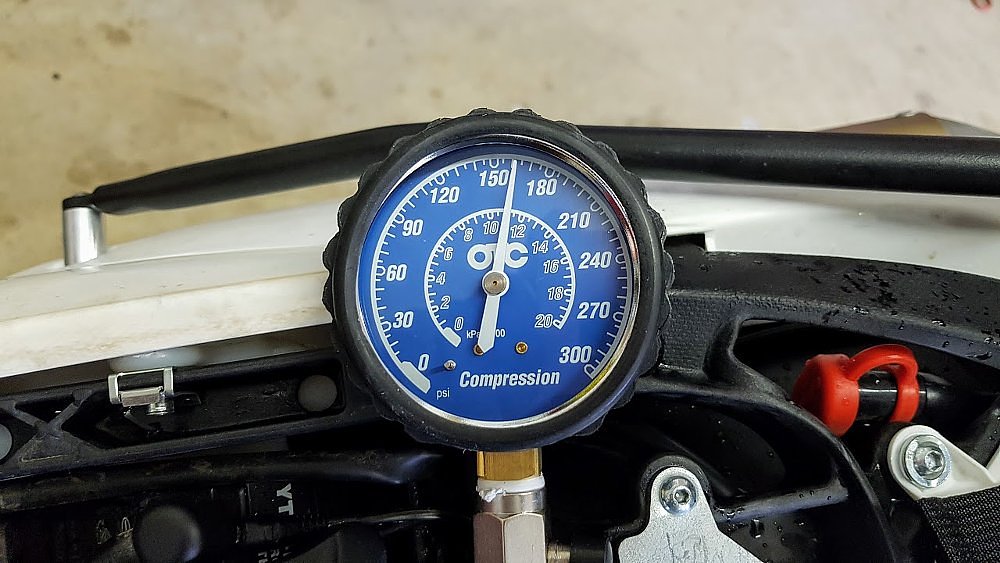
Ingredient one: Compression
An engine needs compression to run. A compression test is a straightforward (and usually simple) test to perform. Performing it also ensures you’re not trying to coax out a running problem that stems from an engine that’s either worn out or broken. Performing a compression test is one of those things that saves disassembling an engine. And to be honest, I think it’s actually better in some cases. I can see when compression is low on a gauge. If I rip the head off, however, to look at a set of piston rings, I could tell you maybe if they were broken. I am unable to see if they were simply worn, but my compression tester sure could. And spotting a valve that wasn’t sealing might prove tricky, too, although it is possible in some cases. Hell, even if your compression tester is ready for the garbage, by using it you at least rule out the possibility of the engine being seized.
As one of our intrepid CT readers has noted before, the static compression test is one that can be helpful if performed before a problem shows up, though it’s certainly not bad after the fact. Having a good baseline will allow you to compare to previous results, rather than a manufacturer’s ideal spec. This is also especially helpful for those who are running radical cams with overlap numbers that may affect a static compression reading.
This is usually my first test when diagnosing. If the bike fails this dry compression test, the running malady has been identified. That allows me to move on to some different tests like wet compression, and leakdown to determine the root cause of the engine’s low compression. Likely culprits can include worn rings (low compression), a stuck valve or broken valve spring (no compression), or leaking head gasket (could be any compression reading at all with those). Further testing may suss out poor valve sealing, weak valve springs, or improper cam timing.
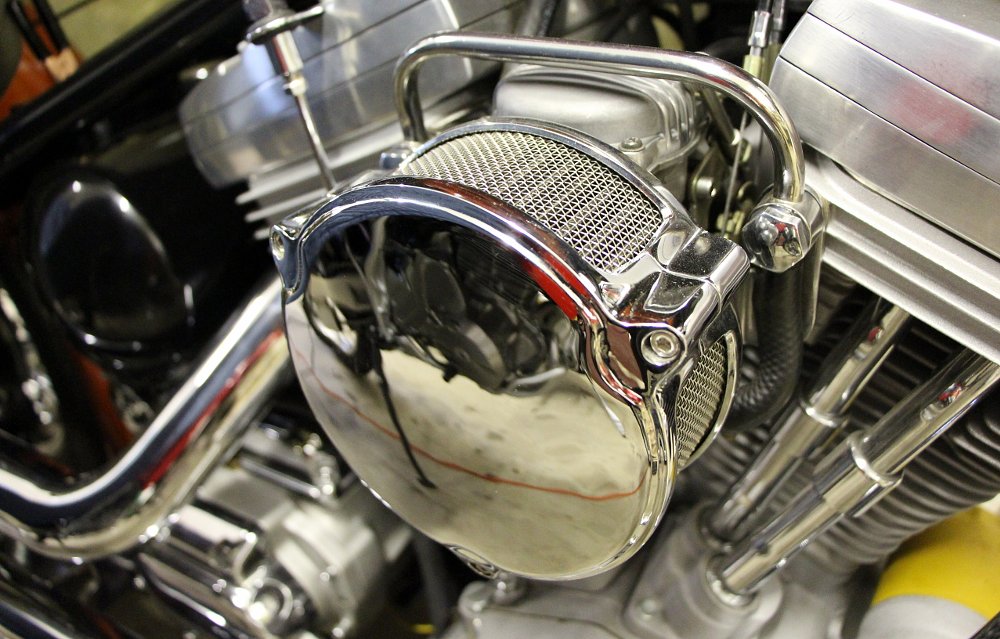
Ingredient two: Air
Air is required to run an engine. Makes sense, if you think about it for two seconds: The easiest way to burn fuel here on Planet Earth is in the presence of air. Wrenchy-guy Joe Zito commented, “I have pulled my fair share of animal nests out of air boxes. Also, I have seen broken choke cables/levers, broken throttle cables and extraordinarily dirty air filters have been the cause of a bunch of no-start bikes.” Excellent points from an excellent technical adviser.
Telling you “An engine requires air to run,” isn’t really completely informative, though. You see, an engine requires the correct amount of air to run. Joe’s examples notwithstanding, I haven’t run into too many situations where lack of airflow was holding up the show (and not quite obvious), but I’ve sure as hell run into bikes that had too much!
Air and fuel need to be delivered in the correct ratio, somewhere in the vicinity of 12 to 15 parts air to one part fuel. Any time unmetered air can enter the intake tract downstream of the throttle plate, the “air” part of the equation is wonky and out of whack. In a perverse Catch-22, the unmetered air leak, which already is creating a lean situation, often reduces manifold vacuum, making it more difficult for the engine to slurp fuel in a carbureted motorcycle, leaning things out even more.
If you suspect an intake leak, you can do a quick-and-dirty check, or take the time to perform my preferred test — pressurize (or remove pressure from… is that vacuumize? De-compress? I digress) the intake and douse it with liquid leak detector.
Checking out the air situation, like compression, is actually a pretty straightforward check. If you’ve checked your compression and your intake manifold for leaks, you’ve performed two tests that take pretty little time and ruled out a slew of possible problems. I can’t think of many other air-related issues beyond what we’ve discussed.
The next two items, I would say, can be a bit harder to track down simply because there are more potential causes for the symptoms.
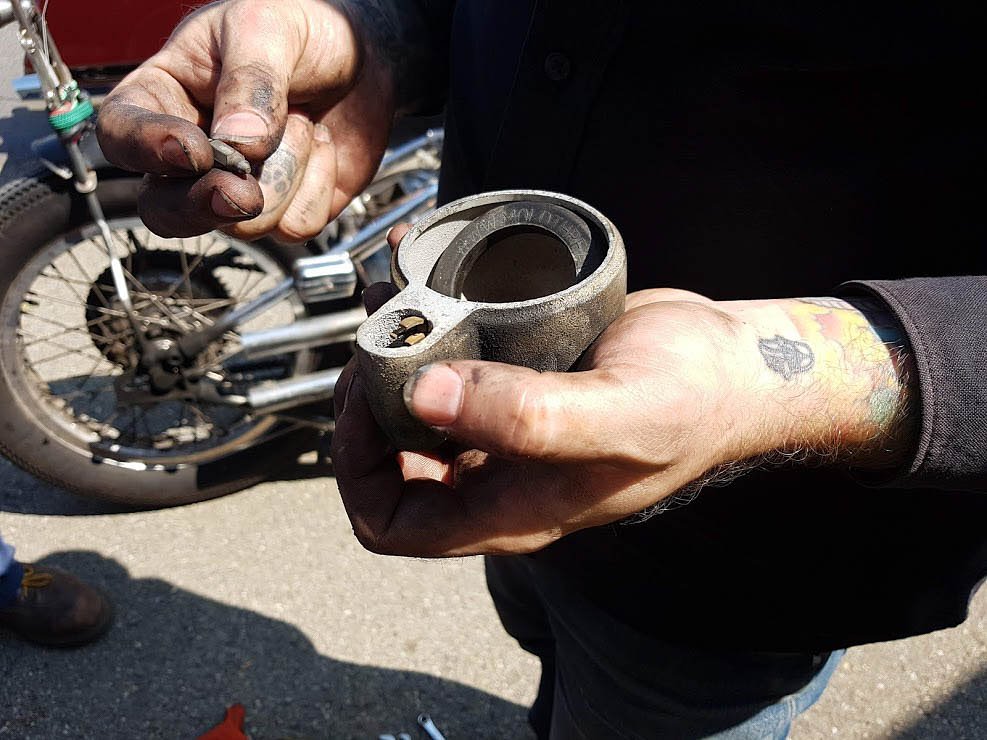
Ingredient three: Fuel
Fuel and air sort of work hand in hand, as we just discussed. The quality of this ingredient needs to be taken into account. “Ethanol fuel coagulates rather rapidly in storage. Just because there is fuel in the tank, doesn't mean it’s going to burn,” remarked Zito. I’ve said the same thing in a jillion places. The fuel needs to be good fuel. Then, of course, we can carefully consider the quantity. Just like air, fuel needs to be present in the correct amount.
Fuel is similar to air in that it rarely shows up (especially in modern bikes!) in quantities that are too great. It could happen, though, like in this scenario I’ve seen at least once before: A leaky petcock was coupled with a bad carburetor needle/seat interface allowed crankcases and jugs to fill with fuel — to the point of causing engine hydrolock when it was cranked. (Which resulted in a big loss of Ingredient One!)
If my experience is any guide, you’re apt to run into a situation involving not enough fuel. That can happen from that little intake leak we mentioned before. (Isn’t it odd that a “too much air” problem can also cause the engine to not suck enough fuel, throwing the balance even further out of whack?!). Other potential causes involve a fuel filter or petcock screen that’s not flowing correctly, vacuum and venting issues, and clogged jets, injectors, and carb passages. Generally it makes sense to look for fuel as far downstream as possible, then work backwards until it’s found, and generally the problem will be in that vicinity. That’s easy to type, of course, but harder to put into practice.
For instance, if you had a problem that was manifesting itself as an occasional high-speed miss, you might also have a carb bowl that empties too rapidly. Why? Well, maybe the float height is set just a little low. Or perhaps the petcock won’t flow enough fuel. Maybe the fuel line runs near something hot and winds up boiling or vapor-locking in the fuel line only when the throttle is really screwed on. Could the bike just be jetted incorrectly? All of these would be pretty hard to spot or test for. They might even cause you to start looking for your fourth ingredient. Before we get to that, remember that a smart man once said, “All fuel problems are spark. All spark problems are fuel.” These are, in my experience, the two most likely culprits for most running issues, and unfortunately, their symptoms can be eerily similar, and far less-cut-and-dried than something like compression.
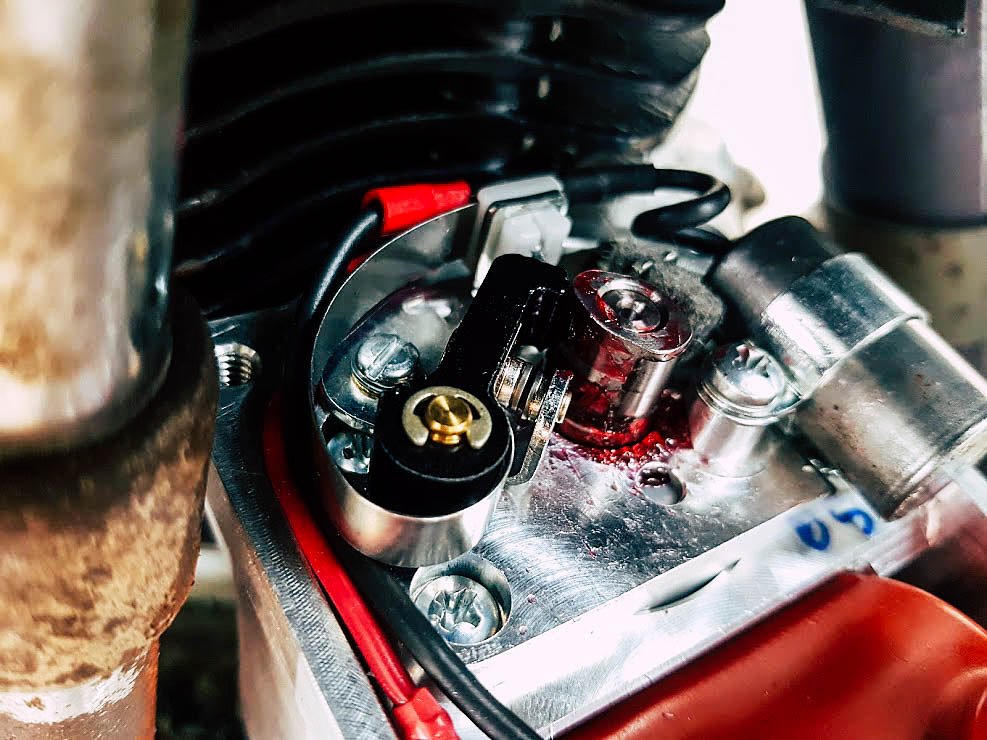
Ingredient four: Spark
Spark is the match that lights off the burn. Spark, like the other ingredients, must occur in the correct amount. (Too much spark isn’t really a thing, I guess. But not enough is often problematic — weak spark will manifest itself as yellow or orange instead of a strong bluish-white.) Spark’s import in chronological terms makes it stand out a bit from the other ingredients. Spark is like a punchline: If it doesn’t happen at just the right time, it’s useless, and there are way more wrong times than right ones for it to happen. If you want to be a crack diag tech, you better have a pretty good idea on how to check timing and a firm grasp on the more theoretical points of ignition system operation as it pertains to motorcycles. If your spark timing is off, your engine simply will not run.
“Aw, help ‘em out a little, Lem,” typed Zito. “Mention that when starting, a backfire through the carb usually indicates too much ignition advance, whereas a backfire through the exhaust indicates the timing is too late. Let them know that spark should happen some time toward the end of the compression stroke. I've helped quite a few folks with ignition timing woes with just that information.”
I wouldn’t disagree with Zito. I’d probably add that if timing hadn’t been an issue previously, it rarely becomes one without some other type of failure. I also would point out that a bike that “kicks back” excessively when starting (trying to run backwards) usually is advanced too far. I’d also recommend learning about ignition timing and doing everything possible to doublecheck it by the book if the concept eludes you.
If you’re confident timing is correct (or just want to verify presence of spark), your test can be as simple as grounding a spark plug and verifying that the ground and side electrode are sparking in a dark garage. There are also all manner of testers available, if you like gettin’ fancy. It does help, however, to know how the ignition system on your motorcycle operates. For instance, late-model Harleys with ion-sensing ignition measure resistance through the spark plug (meaning the bike “senses” if compression is present). If it doesn’t sense it, the ECM will not send a signal to the coil to fire. If you do the ol’ “ground out the plugs to check spark” trick I just mentioned, you need a third plug to stuff into the cylinder in order to check the questionable plug. (And you also need to know that you need that third plug, and carry one in your tool roll, which is a whole ‘nother article. Literally.)
But to test for spark timing? You’ll need a timing light or a healthy faith in electronically controlled brain boxes.
Generally, the easiest way to check for problems related to spark (like fuel!) is to work as far downstream as possible (the plug) to verify spark presence, and then head upstream until the problem is found. Plugs, wires, coils, timers, magnetos, points, condensers, and control modules all can go bad. Mechanical distribution devices can wear. Many ignition components require all manner of different tests for different modes of failure, and unfortunately, many of them can’t be tested without some very specialized equipment. Maddeningly, these pieces often decay, meaning problems related to ignition often occur intermittently and unpredictably.
If you’ve got these four ingredients in the correct quantities at the right time, your motorcycle will run. However, just like when you’re following a recipe, the trick to makin’ everything tasty requires a little more than simply going to the grocery store and putting the ingredients in a pile — but knowing the right ingredients is a good portion of the heavy lifting required.










